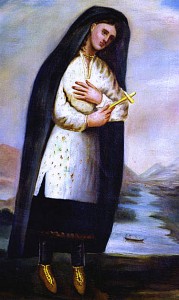Martin of Tours
Feast Day: November 11
Canonized: Pre-Congregation
Throughout his life, Martin faced many dilemmas. At the age of 12, he began to place each one before God.
Martin had been born to pagan parents in the year 316, in a region of the world that is now Hungary. When he was 12, he began to think about a serious question—should he remain a pagan and believe in many gods, or should he accept the one God of the Christians? Martin became a catechumen.
A few years later, Martin was met with another dilemma. His father served in the Roman army, so at 15 Martin became a soldier, too. Yet one question bothered him—should he follow Christ, or should he kill others for the Roman Empire? Martin prayed, then he quit the army.
When Martin was 54, another dilemma leapt into his life. By that time, Martin had gathered a group of hermits into a monastic community—the first in France. But the people of Tours insisted that Martin leave the monastery and become their bishop. Martin prayed, then he went to the cathedral at Tours to be the bishop. Unlike many bishops, he did not live in a grand home, but rather in a monk’s cell.
There Martin taught the people all he knew about God’s kingdom. He preached the good news that God loved all people—pagan and Christian, heretic and saint.
One of the most famous stories about Martin of Tours occurred when he was still a soldier. One day, it is said, he met a beggar wearing rags. He took his sword and cut his military cloak in half and gave half to the poor man for his warmth. That night, Martin dreamed that Jesus was wearing the half of a cloak he had given away. During the Middle Ages, Martin’s cloak (cappa) became a relic that French kings would take into battle. The person whose job it was to care for the cloak was often a priest, and he was called a cappellani. It is from this that the word “chaplain” evolved.
Martin died in France in 397 at the age of 81 and, at his request, he was buried in a cemetery with the poorest of the poor. Soon, pilgrims traveled to his grave at Tours. Today in many countries in Europe, St. Martin’s feast day is celebrated widely.
Connecting to Blest Are We® Parish and School
Grade 3, chapter 3




Comments are closed.